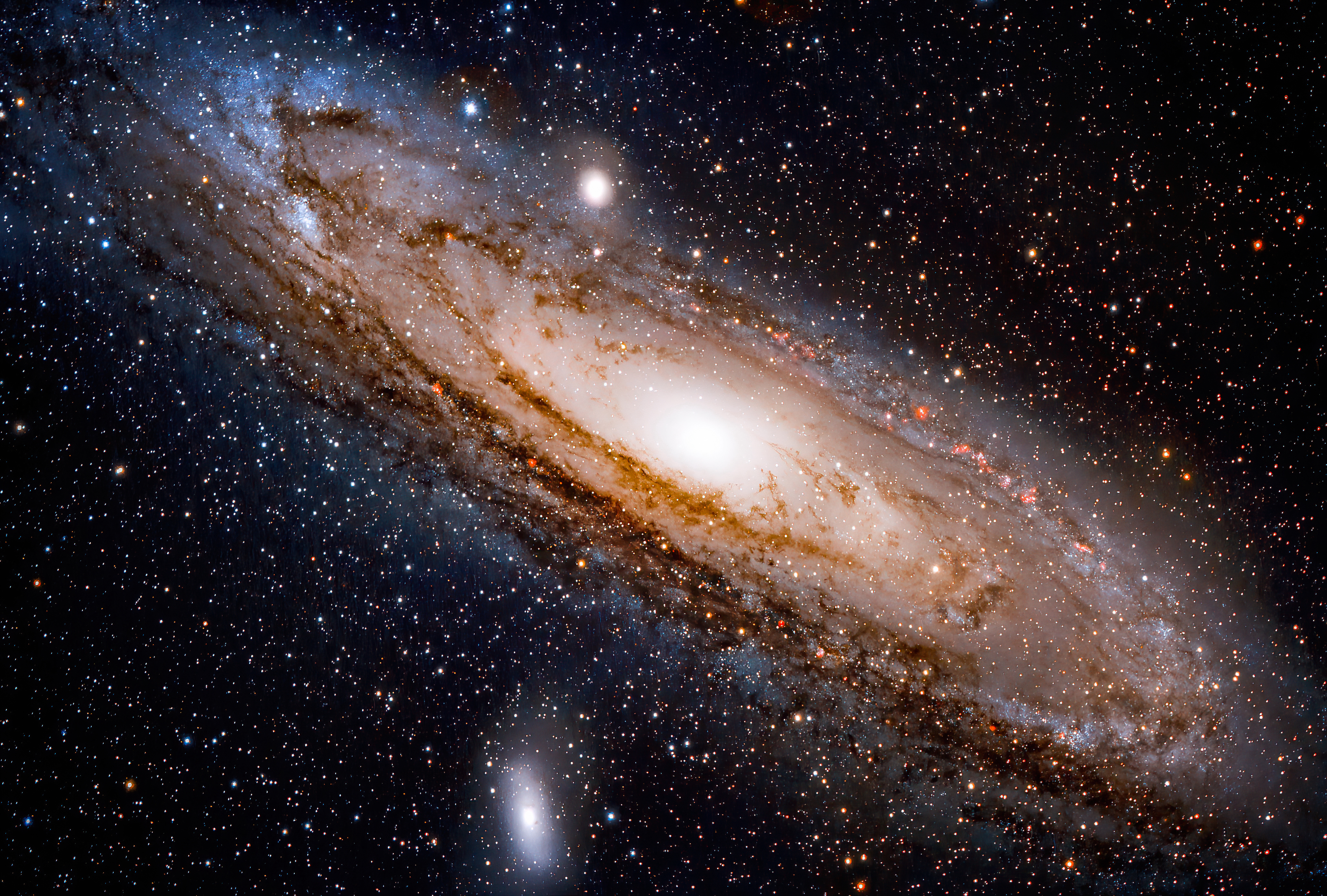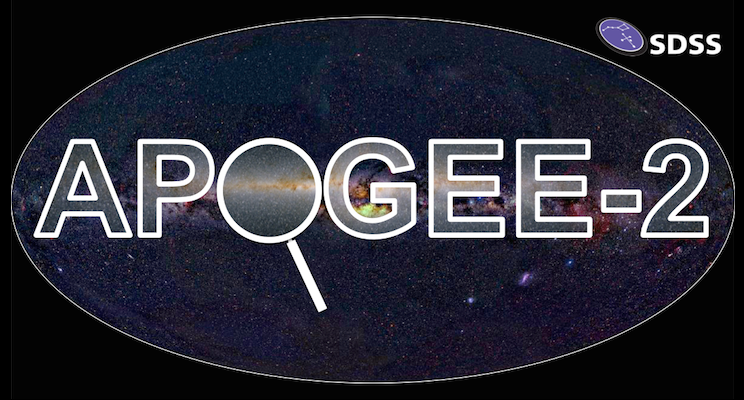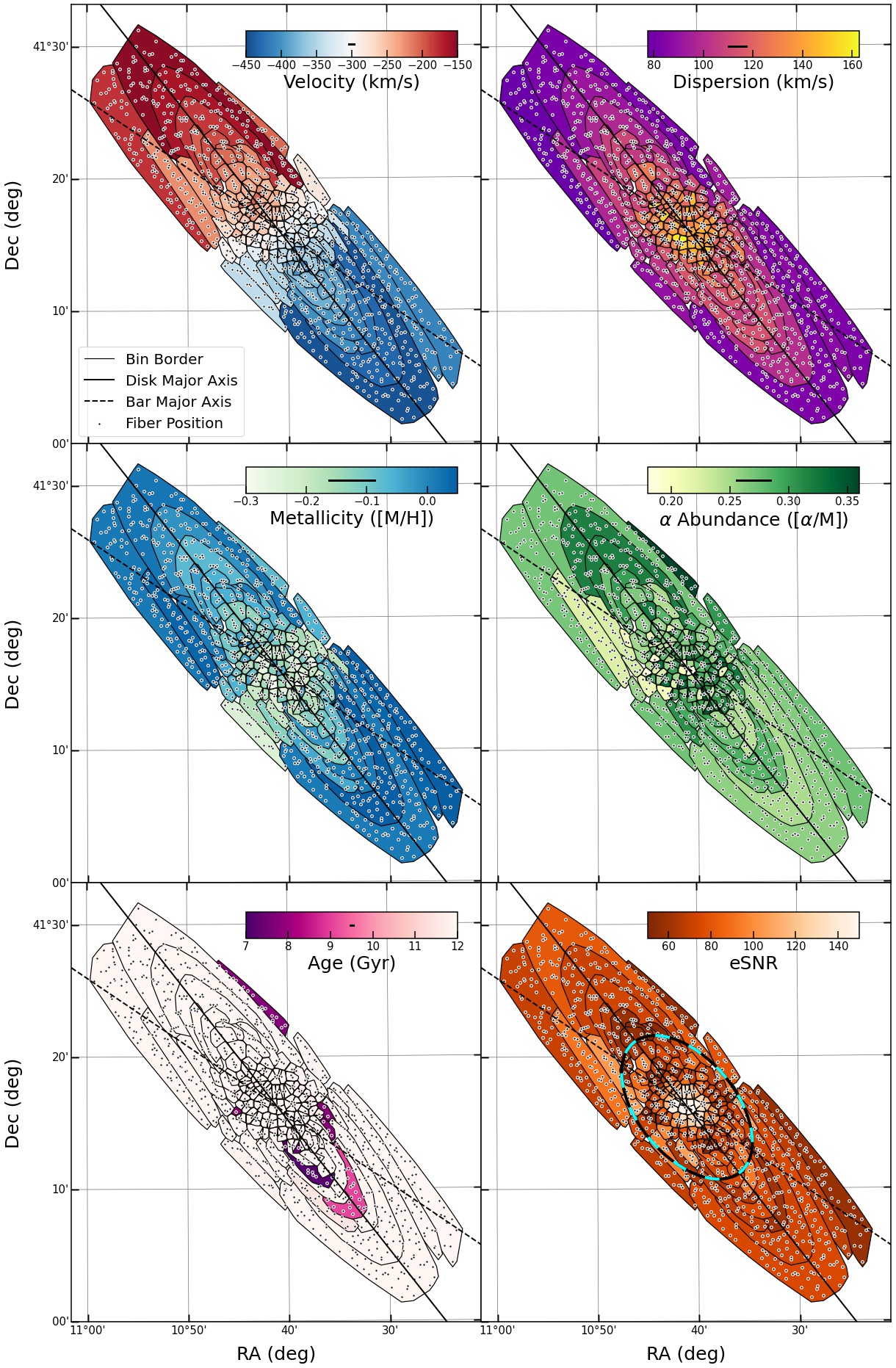Publications
Gibson, Benjamin J.; Zasowski, Gail; Seth, Anil; ...; et al., 2023, The Chemodynamics of the Stellar Populations in M31 from APOGEE Integrated Light Spectroscopy, Astrophysical Journal, 952, 23 (arXiv:2304.09901)
The primary results from this paper are shown left. They are maps of the average kinematics, chemical composition, and age of the stellar populations in the disk and bulge of M31.
Wainer, Tobin M.; Zasowski, Gail; ...; Gibson, Benjamin J.; et al., 2023, Catalog of Integrated-light Star Cluster Light Curves in TESS, Astronomical Journal, 166, 106 (arXiv:2307.09510)
Dey, Arjun; ...; Gibson, Benjamin J.; ...; et al., 2023, RomAndromeda: The Roman Survey of the Andromeda Halo, (arXiv:2306.12302)
Abdurro’uf,..., Gibson, Benjamin J., et al., 2022, The Seventeenth Data Release of the Sloan Digital Sky Surveys: Complete Release of MaNGA, MaStar, and APOGEE-2 Data, Astrophys J Suppl Ser, 259, 35 (arXiv:2112.02026)





